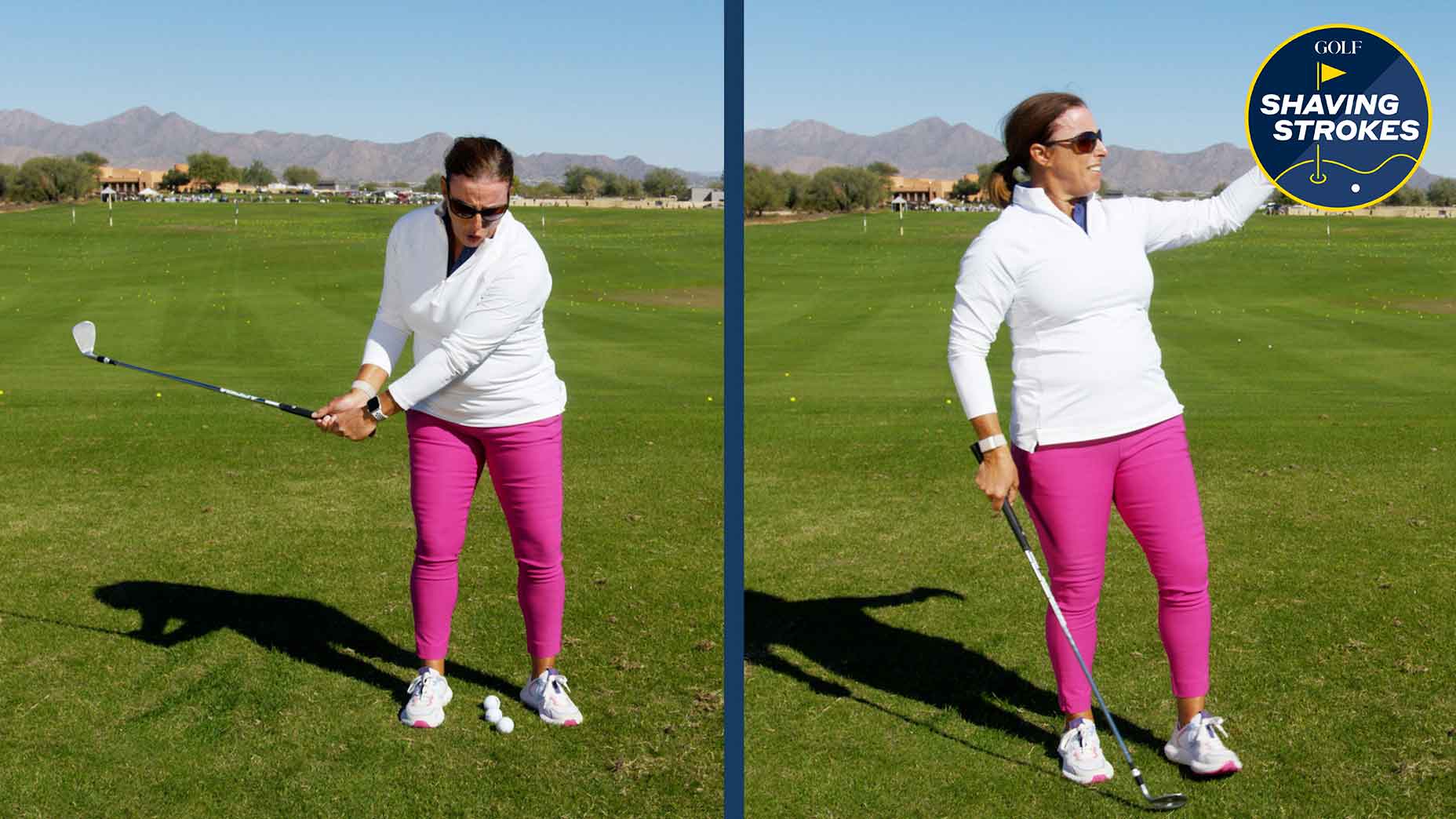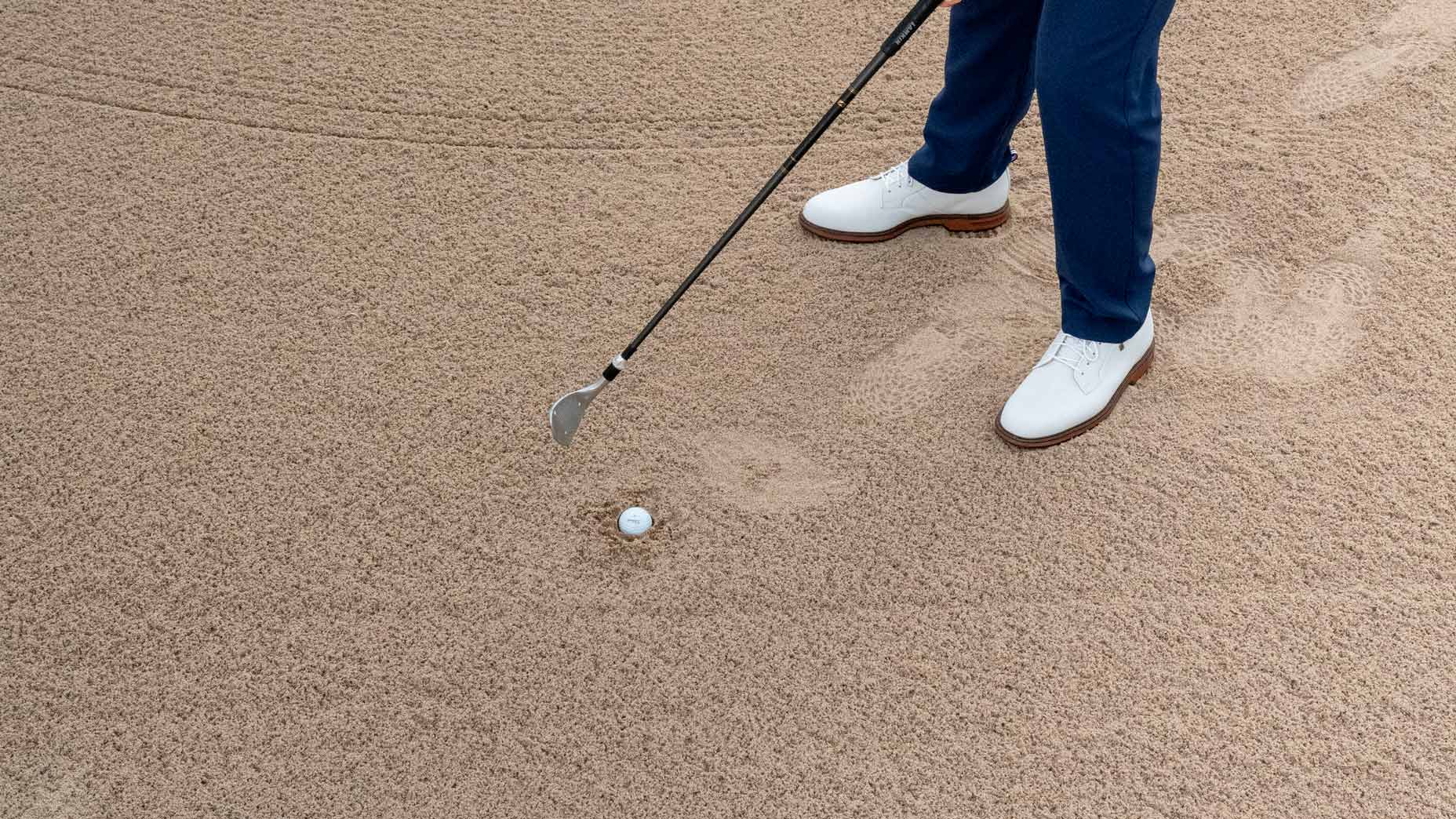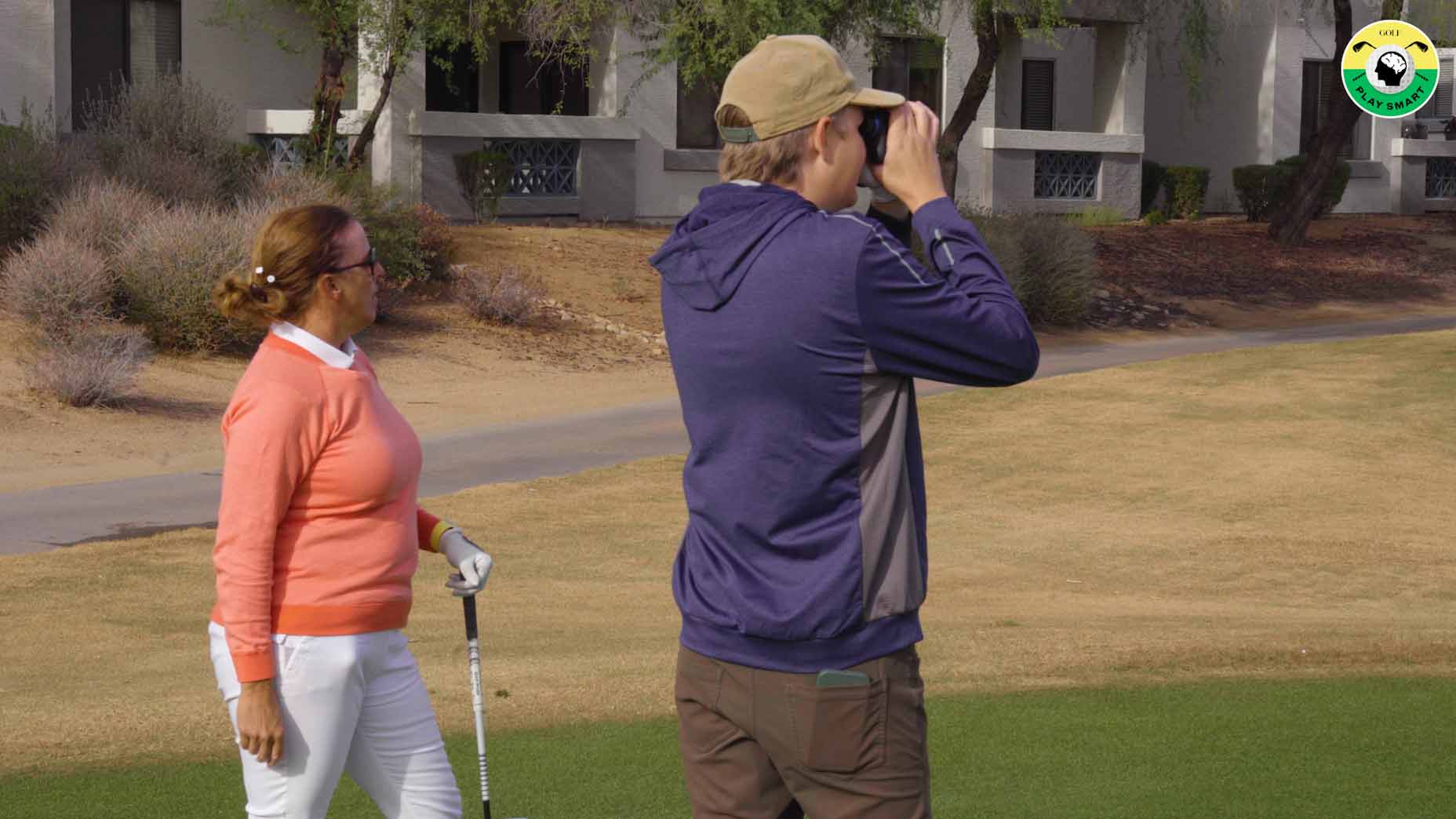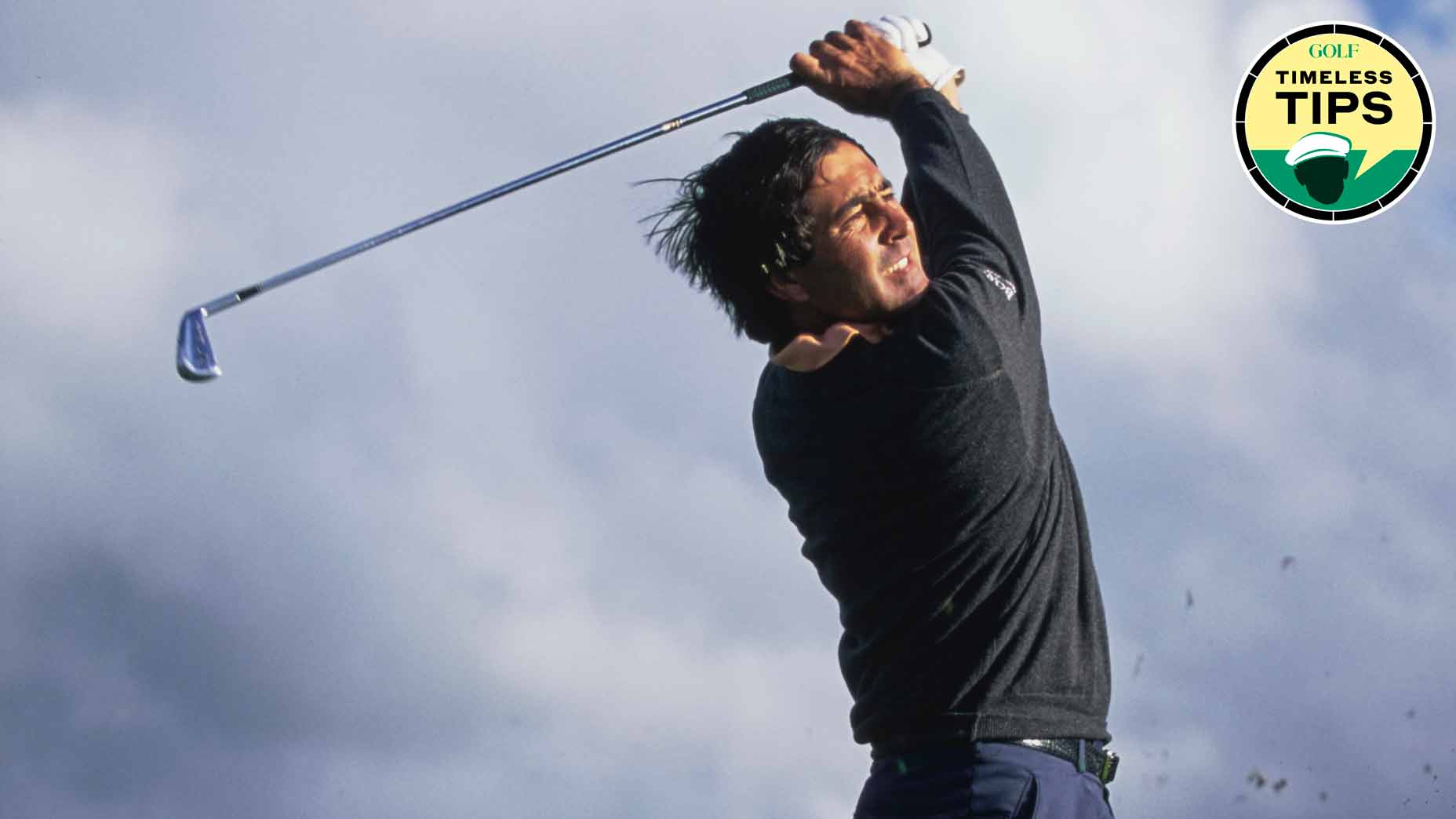Welcome to Shaving Strokes, a GOLF.com series in which we’re sharing improvements, learnings and takeaways from amateur golfers just like you — including some of the speed bumps and challenges they faced along the way.
Golf ball position makes a huge difference in how successful your shot is, especially on those tricky distances between 75-100 yards.
That’s because, if it’s in the wrong spot, you could fly the ball either too high or too low, impacting both the ball’s spin and the ultimate result. When this happens, you could see the ball roll off the putting surface rather than hold it — which is always painful.
As the video above shows, I’ve always positioned the golf ball towards the middle-to-front of my stance from this sort of short-approach-distance shot, hoping to produce an accurately sailing flop-like shot.
Unfortunately, this type of strategy leaves little margin for error.
If my club digs into the ground, I chunk it. If I get lazy in my rotation and lean back, I thin it. And even if I hit it pure, there’s no guarantee I’ll carry my ball to the correct distance I’m looking for.
So, in a recent lesson with GOLF Top 100 Teacher Joe Plecker, he had me rethink my ball position, suggesting I move it back in my stance and delofting the club. By doing this, the ball flight is lower, ensuring I carry it the desired distance — but still allowing me to use a full swing.
Check out some of Plecker’s tips below, and see why rethinking your ball position can lead to mastering those shots between 75-100 yards.
Editor’s Picks
The proper golf ball position for 75-100-yard shots, per top teacher
Before even addressing my ball, Plecker explains why this shot is important in order to reach my goal of breaking 80.
“You’ve got to get the ball to land that distance, not to roll out,” he tells me. “This one’s got to fly and stop at that yardage.”
Next, Plecker has me get into my setup and hold my address. He then discusses my ball positioning.
“You’ve got the ball position a little forward in your stance,” he observes. “Now when I put a shaft [of another club] across your shoulders, notice how that opens your alignment more to the left?”
He has me take my normal shot, with the result producing somewhat of a little flop shot.
“Notice what happened there; the club actually hit behind the golf ball,” he says. “I see this a lot with golfers when they try to hit a higher, softer shot and the ball sneaks a little too far ahead of their center. We’re going to hit the ground first, and that’s a chunk or a blade.”
Plecker has me set up again to address the ball, instructing me to use my normal swing — which produces good contact and a high-trajectory shot.
But this is where he wants to change my ball position, suggesting I move it back in my stance.
“When you hold your hands on the club and you’ve got the ball back, look at what’s going to happen to your shoulders. They’re going to naturally close a little bit. When I move the handle forward, we’re really delofting the club.
“So our expectation, when you use your normal swing, is that this ball is going to fly a little bit lower and carry a little bit longer.”
On my first attempt, I don’t make any turf interaction, leading to bad contact and a thinned shot — all due to fear of chunking it. But Plecker reminds me that you must make a divot to experience a great result.
“Know what I call divots in golf? Job security…” Plecker quips, “There’s a whole industry of people making a living by fixing these divots for us.”
To help correct the problem, Plecker readjusts my aim and closes my stance a bit more, while also having me reposition my feet.
“Play that ball back of center, and I’m just going to use your shoulders and body a little bit more closed,” he tells me. “With the hands forward and the loft down, let’s make that divot after the golf ball.”
After hitting a near-perfect shot, Plecker doubles down on his tips, saying this should be the blueprint for every approach shot from this distance moving forward.
“Now you’ve got a template right now about your ball position, shoulder alignment, and the loft of the club that will give you different trajectories and distances,” he adds.
Titleist Vokey SM10 Tour Chrome Custom Wedge
$189.99
View Product
















